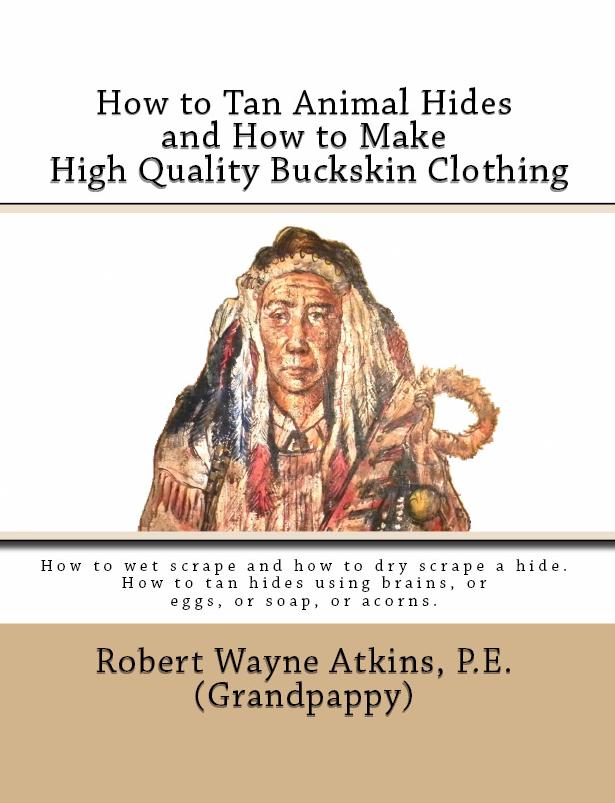






































| Chapter | Page | |
| 1 | The History of Hide Tanning and Buckskin Clothing | 1 |
| 2 | The Fifteen Basic Tanning Steps and the Minimum Equipment Required | 4 |
| 3 | Hide and Meat Acquisition and Meat Processing | 7 |
| 4 | Skinning and Butchering a Wild Game Animal | 11 |
| 5 | Introduction to Scraping: Dry Scrape or Wet Scrape? Scrape Flesh or Hair First? | 19 |
| 6 | First Water Soak Before Scraping the Flesh Side of an Animal Hide | 21 |
| 7 | Scraping Techniques and Equipment | 24 |
| 8 | Scraping the Flesh Side of an Animal Hide | 31 |
| 9 | Second Water Soak Before Scraping the Hair Side of an Animal Hide | 32 |
| 10 | Scraping the Hair Side of an Animal Hide | 35 |
| 11 | Aging a Hide | 39 |
| 12 | Third Water Soak in Clean Water or in a Solution of Vinegar and Water | 40 |
| 13 | Scraping the Residual Membrane from the Flesh Side of an Animal Hide | 42 |
| 14 | Dyeing a Hide a Different Color (Optional) | 43 |
| 15 | Wringing Most of the Water out of an Animal Hide | 44 |
| 16 | Repairing a Hide Before Tanning and Smoking | 46 |
| 17 | Tanning a Hide using Brains, or Eggs, or Oil and Soap, or Acorns | 50 |
| 18 | Softening, Stretching, and Sanding - Part 1: How to Use a Rope or Cable | 56 |
| 19 | Softening, Stretching, and Sanding - Part 2: How to Use a Stretching Frame | 60 |
| 20 | Softening, Stretching, and Sanding - Part 3: How to Use a Rock or Sandpaper | 70 |
| 21 | Introduction to Smoking | 71 |
| 22 | Smoking an Animal Hide | 74 |
| 23 | Final Hide Inspection and Deciding How the Hide Should be Used | 80 |
| 24 | Introduction to Homemade Buckskin Clothing and Animal Sinew | 81 |
| 25 | How to Make Your Own Clothing Patterns | 86 |
| 26 | Needles, Hems, Seams, and Stitches | 90 |
| 27 | Buttons, Buttonholes, Drawstrings, Suspenders, Belts, and Belt Loops | 94 |
| 28 | Darts, Pockets, Sleeves, Fringes, Tassels, and Yokes | 98 |
| 29 | Undergarments: Loincloths, Underwear, Halters, and Bras | 104 |
| 30 | Pants, Jeans, and Leggings | 108 |
| 31 | Shirts and Blouses | 114 |
| 32 | Skirts and Dresses | 119 |
| 33 | Ponchos, Robes, Jackets, Coats, and Blankets | 124 |
| 34 | Hoods, Caps, Ski Masks, Mittens, and Gloves | 126 |
| 35 | Moccasins | 132 |
| 36 | Buckskin Strips, Ropes, and Whips | 138 |
| 37 | A Buckskin Sling and How to Correctly Use a Sling for Hunting | 140 |
| 38 | Parchment, Homemade Ink, and a Feather Pen | 141 |
| 39 | A Simple but Extremely Practical Smokehouse | 149 |
| 40 | How to Smoke Meat | 154 |
| Index | 156 | |
| About the Author | 160 |

